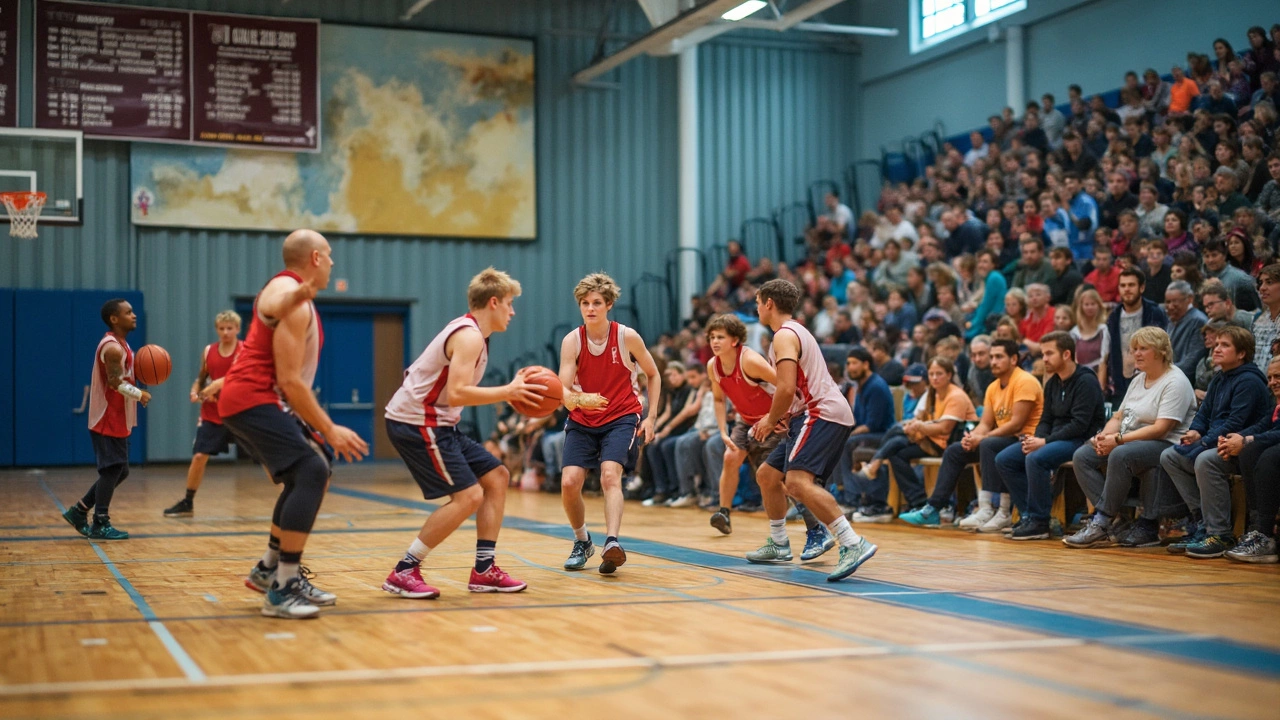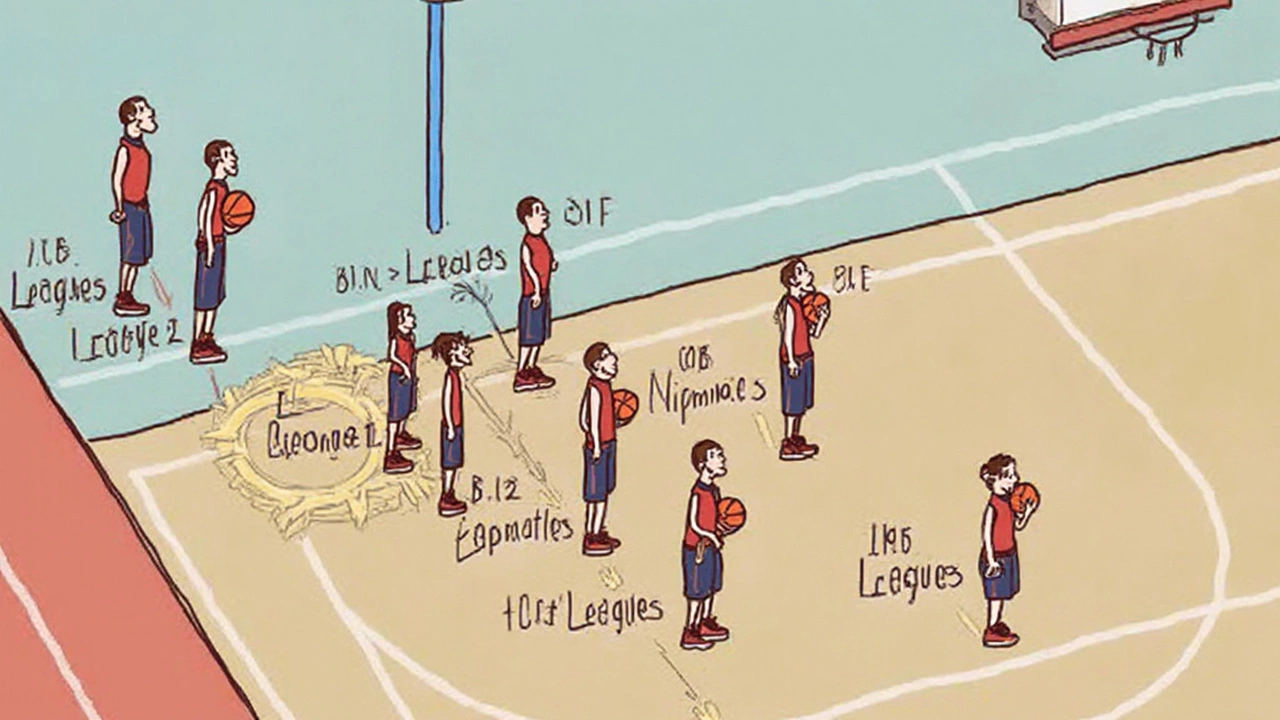Is League 2 the Lowest League in Basketball?

Ever heard a team got bumped down to "League 2" and wondered if that means they're at rock bottom? You’re not alone—basketball leagues can get confusing, with all these numbers and names flying around. The truth is, League 2 isn’t always the lowest spot a team can land in basketball.
Every country handles its basketball league structure a bit differently. Some have only a handful of tiers. Others keep going lower with regional or even community leagues. League 2 usually means a team is one step below the top-flight, but there can be several more levels underneath, depending on where you live.
- What Does League 2 Mean in Basketball?
- How Basketball Leagues Are Structured
- Is League 2 the Bottom? A Look at Lower Divisions
- How to Find the Right League for You or Your Kids
What Does League 2 Mean in Basketball?
Let’s clear up what people really mean when they talk about League 2 in the world of basketball. Usually, League 2 is a second-tier competition, sitting just below the premier or top division in a country’s basketball league system. But here’s the kicker: having "2" in its name doesn't mean it's the "lowest league" everywhere. It’s just a ranking, not a verdict on skill or pride.
Take the United Kingdom, for example. They’ve got the British Basketball League (BBL) at the top, then the National Basketball League (NBL) Division 1, and then NBL Division 2. League 2 (or Division 2) is not the bottom—there’s a whole Division 3 and sometimes even regional leagues underneath it. The same goes for other countries like Spain, France, and Australia. They each have their own spin on how many tiers sit below League 2.
Check out this simple example from England:
| Level | League Name |
|---|---|
| 1 | BBL (British Basketball League) |
| 2 | NBL Division 1 |
| 3 | NBL Division 2 |
| 4 | NBL Division 3 |
The idea is similar around the world: League 2 just tells you where a team fits in the lineup—it’s not a label for "bottom of the barrel." When you hear a team plays in League 2, they’re usually in the mix, fighting for promotion up to the top, and staying just ahead of a bunch of other teams below.
If you want to know exactly where League 2 falls in your area, look up your country’s basketball association website or ask someone who plays. They’ll give you the specific layout for your local scene.
How Basketball Leagues Are Structured
Basketball leagues run kind of like a big ladder. At the top, you’ve got the premier league—think the NBA in the US or the BBL in the UK. These are the leagues everyone’s heard about. Right under that, you get the next highest tier, which is often called League 2 or something similar. But don’t be fooled—that’s not the bottom.
Here’s how most basketball league structures work:
- National Leagues: These are the top levels, with the best teams in the country. In some places, like in Spain or France, you’ve got Liga ACB or LNB Pro A at the very top, and then national second divisions, sometimes called League 2.
- Regional Leagues: Below the national stuff, you’ve got leagues split by areas or states. These are a step down from the national ones, but the competition can still be pretty serious.
- Local or Community Leagues: This is where most people play once you go below regional leagues. Games are usually closer to home, and skill levels can vary a lot.
The setup looks a lot like European soccer: teams can move up (promotion) or move down (relegation) between levels, depending on how well they do in a season. This keeps things interesting—win a lot, you can climb up to a higher league; lose, and you might drop down a step.
| Level | Example (UK) | Description |
|---|---|---|
| 1 | British Basketball League (BBL) | Top professional league |
| 2 | National Basketball League Division 1 | Next highest, often called League 2 |
| 3 | National Basketball League Division 2 | Lower division, still national |
| 4 | Regional Leagues | Split by area |
So, when someone says they're in League 2, it usually means they’re just below the top tier. But there are still more levels underneath, especially once you get into local or youth basketball. The exact number of divisions depends on the country and how popular basketball is there.

Is League 2 the Bottom? A Look at Lower Divisions
People hear League 2 and often assume it’s the last stop before dropping off the basketball map. But that’s not true in most systems. In countries like the UK, for example, League 2 is usually the third or fourth tier. Above it, you’ve got top leagues like the British Basketball League (BBL), then NBL Division 1, and only then League 2. Other places like Australia have their own versions. The NBL1 is a semi-pro league below the top National Basketball League, but guess what? Below that, you’ll find state and local competitions, and the names aren’t always about numbers at all.
It gets even more layered when you look at countries like Spain or France. Their top leagues are packed with history, and their second and third divisions aren’t even called “League 2.” For example, in Spain you’ve got Liga ACB, then LEB Oro, LEB Plata, and even more smaller leagues after that. The lowest basketball leagues are often regional or city-based, with teams competing just for local bragging rights rather than national glory.
Here’s a look at how lower divisions can be organized in a place like England:
- BBL (Pro, at the very top)
- NBL Division 1
- League 2 (sometimes called NBL Division 2)
- NBL Division 3 and 4
- Regional/local leagues (junior leagues, community competitions, veterans divisions, etc.)
It’s not unusual for a basketball setup to have five, six, or even more “steps” beneath League 2. So if a kid like Callum or Talia is playing in League 2, there’s a good chance it’s a pretty decent standard of basketball. Teams can move up (promotion) or go down (relegation) based on performance. That’s how clubs climb the ladder—or slide down if they have a rough season. To put it into perspective, here’s a quick sample from England’s men’s system:
| Level | League Name |
|---|---|
| 1 | BBL |
| 2 | NBL Division 1 |
| 3 | NBL Division 2 |
| 4 | NBL Division 3 |
| 5 | Regional/Community Leagues |
If you’re searching for where you or your kid stands, just check with the local basketball group or look up your country’s official basketball website. Some even have full tables showing all divisions and how teams can rise or fall through the ranks. So no, League 2 isn’t scraping the bottom—there’s usually a whole bunch more below it.
How to Find the Right League for You or Your Kids
So, you’re hunting for a basketball league but aren’t quite sure where to start? The number one thing most parents and players want to know is: which league is actually the best fit? Here’s the deal—there’s no perfect answer, but there are some pretty straight-up ways to figure it out.
First, be honest about your or your child’s skill level. Leagues aren’t just there for future NBA stars. In fact, the majority cater to all types—beginners, casual players, and ultra-competitive athletes. League 2 might sound official, but if you’re just starting, there are probably community or school leagues below that level, especially in bigger countries like the U.S. or the U.K.
"Don’t get too hung up on the league number. The best league is one where your kid is challenged but can still have fun and grow with their teammates." — Tom Henderson, youth basketball coach in Chicago
Next up, location matters. Traveling too far for games every week can be a real headache. Most basketball organizations list their leagues and teams online. If you’re in the U.S., check out the official USA Basketball website. In the U.K., Basketball England has a search tool so you can filter by region and age group.
- Look up your local recreation center—they often organize youth and adult leagues year-round.
- Check your city or county parks department for beginner leagues if you’re new to the sport.
- If your kid is in school, ask about inter-school, district, or after-school leagues—they sometimes don’t show up in Google searches.
- Many clubs let you try a practice before you commit, so don’t be afraid to ask for a trial session.
Here’s a quick snapshot of typical league structures to help you keep things straight:
| Type of League | Skill Level | Typical Age Range |
|---|---|---|
| National League / Pro | Elite/Highly Competitive | 16+ |
| League 2 | Intermediate to Advanced | 15+ |
| Regional / Community | Beginner to Intermediate | All Ages |
| Recreational | Beginner / Just for fun | Kids & Adults |
Don’t forget to double-check league rules. Some use modified basketballs or hoop heights for younger kids. Others might group ages together, which affects competitiveness. And if you’re in it for college exposure, higher-tier leagues (sometimes marked as League 2 or "Elite") often get scouted more frequently.
The takeaway: Don’t stress about league names. The best fit is the league that keeps you or your kid excited for next week’s game. That’s what actually matters.
